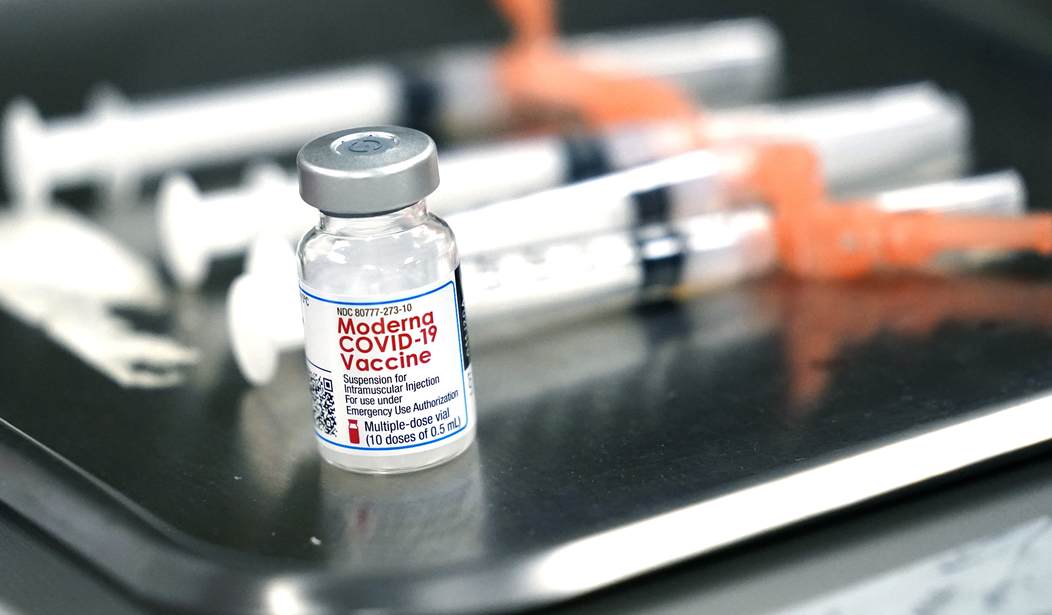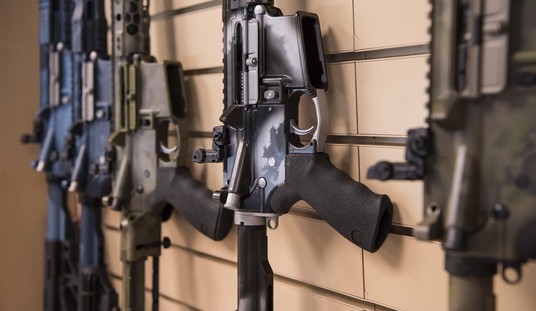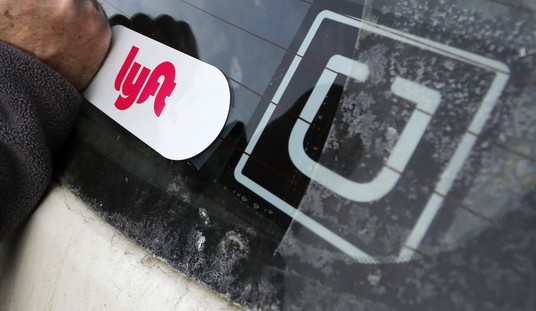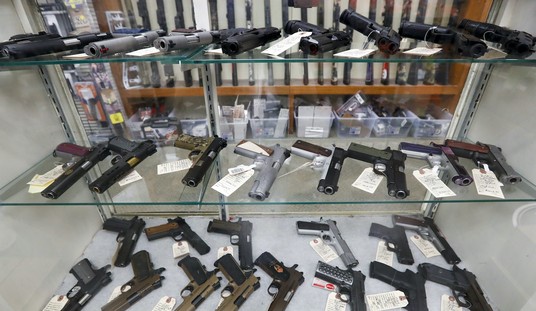There is no doubt in my mind that the long term affects of the pandemic are going to reverberate for years to come. I have people in my personal life that I’m already thinking (I know) they’re going to have a hard time readjusting to normal society. At times it’s so surreal that when one’s out in public and not wearing a mask, it’s as if you’re committing a dirty act. In one way or another, the entire country is going to be suffering from a PTSD of sorts, and perhaps a new roaring twenties.
I recently read through an Associated Press article that put me on a roller coaster: “As pandemic ebbs, an old fear is new again: mass shootings”. Reading along, I felt that some of the points that I’d want to make were being made. Then I reread to have it all sink in. The article is an artful drama that unfolds in different acts. It starts out talking about this fear of “mass shootings” that one individual has.
Brianne Smith was overjoyed to get an e-mail telling her to schedule a second dose of the COVID-19 vaccine. Hours later, her relief was replaced by dread: a phone alert — another mass public shooting.
Before the pandemic, she would scan for the nearest exit in public places and routinely practiced active shooter drills at the company where she works. But after a year at home in the pandemic, those anxieties had faded. Until now.
“I haven’t been living in fear with COVID because I’m able to make educated decisions to keep myself safe,” says Smith, 21, who lives in St. Louis, Missouri. “But there’s no way I can make an educated decision about what to do to avoid a mass shooting. I’ve been at home for a year and I’m not as practiced at coping with that fear as I used to be.”
There is a psychological game going on here right from the get-go, that I’m not even going to explore in full. But somehow looping the pandemic, vaccines, mass shootings, “educated decisions” all got crammed into a dense little paragraph. To be fair, sure, the threat of experiencing a “mass public shooting” was quite low throughout 2020. As was the threat of getting hit by a car, crashing in a plane, being on a bridge that collapses, experiencing a sky-diving accident, etc. Why? Because the majority of the country stayed home. Zeroing in on the one big ticket item that the progressives are clinging onto is insulting the intelligence of the readership. A lot of threats to safety ceased, in public, through the entire pandemic. Theft and run of the mill violence was actually on the rise in many cities, so to say it all stopped would be untruthful of me. Domestic violence was on the rise, as were break-ins. So spare us the theatrics.
The piece does address that fact that gun ownership is on the rise. Part of the talking points throughout is to paint this as a negative picture. One of the best statistical sets of data from the National Shooting Sports Foundation (NSSF) is quoted within, are a complete nightmare to progressives:
More than 21 million people completed a background check to buy a gun last year, shattering all previous records, and a survey found that 40% identified as new gun owners — many of whom belong to demographics not normally associated with firearms, according to the National Shooting Sports Foundation, a firearm industry trade association. Purchases of guns by Black Americans increased 58% over 2019 and sales to Hispanics went up 46%, the group says.
With a rise in gun ownership in minority groups, the Democratic party is feeling somewhat attacked. What we are witnessing in this article and many others like it, is damage control of massive proportions. The end of the article will pull it all together, so stay with me a moment. The piece continues by giving a trite explanation of what “gun advocates” think:
Gun advocates tie this increase to pandemic anxiety and a loss of faith in the ability of police officers and government institutions at all levels to keep the public safe amid what at first was a little-understood, invisible menace. The eruption of sustained racial injustice protests after the police killing of George Floyd and calls to reduce police funding also contributed to more interest in firearms.
I’m not sure what they are trying to say here. Are they saying that the pandemic was an “invisible menace”, or that the “gun advocates” equated the pandemic to just a menace? I suppose either way they’re still throwing stones; shame shame shame.
This is just either casting judgement and being prejudiced towards “advocates” or just saying the pandemic is now only a menace in comparison to the gun epidemic that is coming back. I think it’s the former, with taking a shot at the freedom loving population. The most compelling part about what is being only glossed over is, yes, there has been widespread rioting and civil unrest through the nation in 2020/2021, but it was not coming from “gun advocates”. Pair that with the whimsical idea that it’s smart to defund the police, what other recourse do these policy makers think Americans actually have? In an attempt to seem impartial, they did quote one gentleman that became a new gun owner that seems to understand some of that which the AP cannot:
One of those buyers was Charles Blain, a 31-year-old Black man in Houston who purchased a Glock 43 handgun and a shotgun for the first time last year. Blain, who describes himself as a conservative, says “pandemic-related unemployment crime” and repeated calls over the past year to release hundreds of jail inmates because of soaring COVID-19 infections pushed him to buy.
I wish we could read all of Blain’s full quote, but at least the AP quotes Mark Oliva from the NSSF, bringing another voice of freedom to the party. Heading towards the final act of this drama, the piece navigates through some more statistical analysis. They set the stage to “scene in” the narrative that we’re looking at a “public health” issue when it comes to firearm violence. Take our friend from the beginning of the article that has issues in dealing with the thought of a “mass shooting”:
“…I’ve been at home for a year and I’m not as practiced at coping with that fear as I used to be.”
The statement is telling. The same thing that makes an individual who makes “educated decisions” to keep themselves safe be apprehensive about returning to public life, is the same exact thing that may trigger someone to commit horrible acts, be violent, and follow through with things society just does not think is appropriate. Being locked down and controlled by the government for a year will do that to a person. The article does address this, as they set the stage for the finale:
After a year of isolation, loss and stress, the nation is akin to a patient in an acute mental health crisis — and there is a growing chasm of opinion on whether guns are part of the remedy, or a symptom of the disease.
Yeah, nothing says “unbiased reporting” like wondering if gun ownership is a symptom of an acute mental health crisis.
The article also discusses several “conservative” measures that reverse century old racist laws on who may and may not purchase firearms through permitting processes. Naturally constitutional carry is brought into light, again portrayed as a “conservative” idea. Then they end with this interesting perspective:
Yet in one area, some see the potential to reduce the polarization around guns: the increasing focus of public health in the national conversation. The idea that gun violence is a public health threat — just like the coronavirus and the pandemic it caused — could transform the way Americans talk about guns.
“How can we learn to live with the guns, whereas right now we’re dying with them?” says David Hemenway, a professor of health policy at Harvard University. “The public health approach in a one-sentence description is, ‘Let’s make it really easy to be healthy and really difficult to get sick and injured.’ We have to agree we have a big problem and it’s a societal problem. Then, there are so many things we can talk about.”
There is the rhetoric. Be convinced gun ownership is a “public health threat” then do an alley-oop by asking “How can we learn to live with the guns, whereas right now we’re dying with them?”
What seemed to be a fair and unbiased piece connecting the pandemic, with a splash of “insurrection” for good measure, and an uptick in gun violence/mass shootings, actually turns out to be a bit of a passive aggressive anti-freedom manifesto. If these hot spots of severe violence are the reason people are citing for wanting to be armed, maybe the leadership of those jurisdictions should implement real policing. Instead of hiding behind the veil of rioting being a First Amendment right, respect other people’s want to exercise their Second due to administrative/governmental failure.
The answers to dealing with a post-pandemic world are not going to be easy ones. Is it too soon to call what we’re in now “post-pandemic”? The article says in the title “…pandemic ebbs”, so let’s roll with that. No, the answers to dealing with a nation of people coming from their own home prisons, back into the world, will not come easy. The public is going to have to deal with situations that can’t be fixed by “educated decisions” to keep one’s self safe. We’ll have to rely on old fashioned preparedness and situational awareness. We’re going to be in an interesting place, to put it lightly. But, no, don’t start making this about the guns again. People see what is going on and many have elected to exercise their right to self-defense as the government fails them.








Join the conversation as a VIP Member